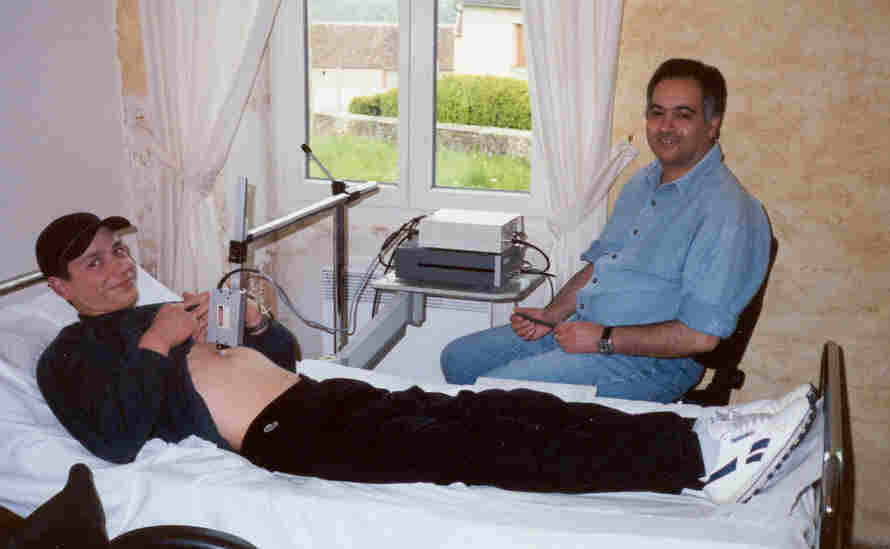
In
any traditional medicine and more specifically in the Chinese thought, the
world, life, and health are closely linked together.
These medicines come from a rich and humanistic past
and will become the medicine of the 21st century, issued from
varied cultures and civilizations. 
Thus,
acupuncture, moxibustion, and today laserponcture® come to help and fight
against illness, and, more specifically, spinal cord injuries (SCI) as far
as laserponcture is concerned.
Laserponcture is directed to the “Huan” membrane, which seems to be the
somatic conjunctive tissue, which would hold the nervous structures
through which runs the propagated sensation along the canals (PSC). These
free nervous endings are close to the pre-capillary vessels. We believe
that they carry a neurotransmitter, which is unknown but probably from a
histaminic origin.
What is
the PSC? It is the privileged moment when the needle or the laser beam
provides the force life, and the patient feels various sensations such as
“pain, hot, cold, tingling, numbness or pins and needles.” All of these
sensations are felt by patients with SCI treated by laserponcture.
The
Chinese tradition believes that there are three different speeds of PSC
helping to balance the organism:
1)
The somatic
nervous system, whose propagation is fast;
2)
The autonomous
nervous system, whose propagation is slow;
3)
The channel
network (acupuncture and neo-acupuncture), whose propagation is even
slower and through which the PSC runs.
This
PSC disappears in the case of complete spinal cord transection; it seems
that laserponcture re-establishes this PSC.
Laserponcture relates the channel networks to acupuncture and
neo-acupuncture points – highlighted through our research – and to
dermatomes levels, which match cutaneous spinal cord segments – cervical,
thoracic or lumbar segments. Laserponcture re-establishes a dialog between
the brain and the part of the body below the injury. Many results obtained
show it, but it would be too long to present them here [2, 3] (see
www.laserponcture.net).
A
thesis in medicine has already been written on laserponcture by Dr Cecile
Jame-Collet, M.D., Faculté de Médecine Léonard de Vinci, Paris Nord [5].
Numerous works combine laser and stem cells, or
laser and carpal tunnel
syndrome, or the treatment of pain [1, 4, 10, 11, 12, 13], and use of
magnetic fields in SCI problems [14].
The
laserponcture machine is unique worldwide and was developed according to
my specific specifications by the Ecole Nationale Supérieure des Arts et
Métiers in Cluny (ENSAM) and financed with grants from the French
government (Bourgogne Réseau).
Patients with SCI come from many parts of the world to our clinic in La
Chapelle Montlinard. Because the results are convincing for many, the
information has spread through the SCI community.
Our
goal is to make the therapy more accessible and teach it so that more and
more individuals can have access to it, regardless of financial means or
other, consistent with the preamble of the World Health Organization (WHO)
Constitution: “The best health condition is one of the fundamental rights
of any human being, whatever his race, religion, political ideas and
economic or social position.”
TOP